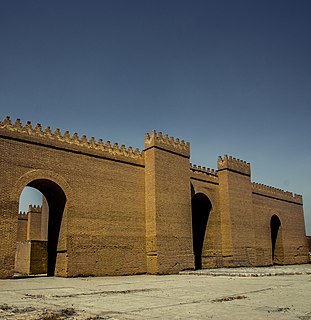 W
WBabylon was the ancient city where some of the most influential empires of the ancient world ruled. It was the capital of the Babylonian Empire and it was considered to be a center of commerce, art, and learning and is estimated to have been the largest early city in the world, perhaps the first to reach a population above 200,000.
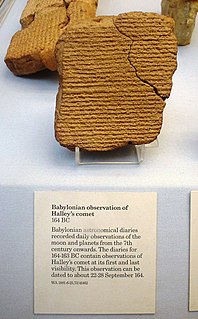 W
WBabylonian astronomy was the study or recording of celestial objects during the early history of Mesopotamia.
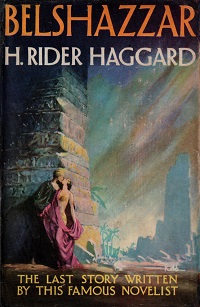 W
WBelshazzar is a historical novel by H Rider Haggard set in Ancient Babylon. It was written in 1924, and was just finished at the time of his death.
 W
WThe Bible: In the Beginning... is a 1966 American-Italian religious epic film produced by Dino De Laurentiis and directed by John Huston. It recounts the first 22 chapters of the Biblical Book of Genesis, covering the stories from The Creation and Adam and Eve to the binding of Isaac. Released by 20th Century Fox, the film was photographed by Giuseppe Rotunno, and Ernst Haas shot the opening creation sequence, in Dimension 150, a variant of the 70mm Todd-AO format. It stars Michael Parks as Adam, Ulla Bergryd as Eve, Richard Harris as Cain, John Huston as Noah, Stephen Boyd as Nimrod, George C. Scott as Abraham, Ava Gardner as Sarah, and Peter O'Toole as the Three Angels.
 W
WThe Code of Hammurabi is a Babylonian legal text composed c. 1755–1750 BC. It is the longest, best-organised, and best-preserved legal text from the ancient Near East. It is written in the Old Babylonian dialect of Akkadian, purportedly by Hammurabi, sixth king of the First Dynasty of Babylon. The primary copy of the text is inscribed on a basalt or diorite stele 2.25 m tall. The stele was discovered in 1901, at the site of Susa in present-day Iran, where it had been taken as plunder six hundred years after its creation. The text itself was copied and studied by Mesopotamian scribes for over a millennium. The stele now resides in the Louvre Museum.
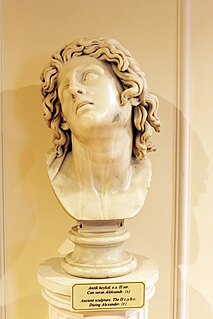 W
WThe death of Alexander the Great and subsequent related events have been the subjects of debates. According to a Babylonian astronomical diary, Alexander died between the evening of June 10 and the evening of June 11, 323 BC, at the age of thirty-two. This happened in the palace of Nebuchadnezzar II in Babylon.
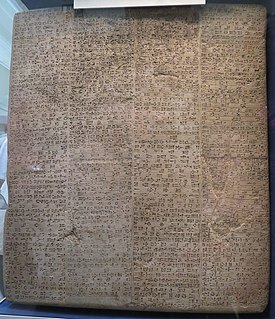 W
WThe East India House Inscription is an important foundation tablet from ancient Babylon. Since 1938, it has been a major artifact in the British Museum's Middle East collection.
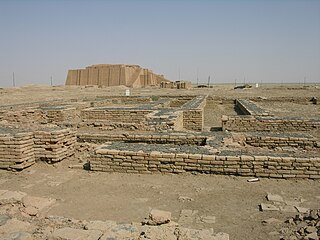 W
WEnnigaldi-Nanna's museum is thought by some historians to be the first museum, although this is speculative. It dates to circa 530 BCE. The curator was Ennigaldi, the daughter of Nabonidus, the last king of the Neo-Babylonian Empire. It was located in the state of Ur, located in the modern-day Dhi Qar Governorate of Iraq, roughly 150 metres (490 ft) southeast of the famous Ziggurat of Ur.
 W
WEtemenanki was a ziggurat dedicated to Marduk in the ancient city of Babylon. It now exists only in ruins, located about 90 kilometres (56 mi) south of Baghdad, Iraq.
 W
WThe Fall of Babylon denotes the end of the Neo-Babylonian Empire after it was conquered by the Achaemenid Empire in 539 BCE. Historians also use the term Liberation of Babylonia interchangeably.
 W
WThe Hanging Gardens of Babylon were one of the Seven Wonders of the Ancient World listed by Hellenic culture. They were described as a remarkable feat of engineering with an ascending series of tiered gardens containing a wide variety of trees, shrubs, and vines, resembling a large green mountain constructed of mud bricks. It was said to have been built in the ancient city of Babylon, near present-day Hillah, Babil province, in Iraq. The Hanging Gardens' name is derived from the Greek word κρεμαστός, which has a broader meaning than the modern English word "hanging" and refers to trees being planted on a raised structure such as a terrace.
 W
WHarut and Marut are two angels mentioned in Quran 2:102, who are said to have been located in Babylon. According to some narratives, those two angels were in the time of Idris. The Quran indicates that they were a trial for the people and through them the people were tested with sorcery. The story itself parallels a Jewish legend about the fallen angels Shemḥazaī, ʿUzza, and ʿAzaʾel. The names Hārūt and Mārūt appear to be etymologically related to those of Haurvatat and Ameretat, two Zoroastrian archangels. Haurvatat-Ameretat appears in Sogdian language texts as hrwwt mrwwt. A relationship to Armenian hawrot mawrot has been suggested but is not confirmed. Muslim sources disagree, whether Harut and Marut can be considered fallen angels or not.
 W
WThe Ishtar Gate (Arabic: بوابة عشتار) was the eighth gate to the inner city of Babylon. It was constructed in about 575 BCE by order of King Nebuchadnezzar II on the north side of the city. It was part of a grand walled processional way leading into the city. The walls were finished in glazed bricks mostly in blue, with animals and deities in low relief at intervals, these also made up of bricks that are molded and colored differently.
 W
WJehoiachin's rations tablets date from the 6th century BC and describe the rations set aside for a royal captive identified with Jeconiah, king of Judah. Tablets from the royal archives of Nebuchadnezzar king of Babylon were unearthed in the ruins of Babylon that contain food rations paid to captives and craftsmen who lived in and around the city. On one of the tablets, "Ya’u-kīnu, king of the land of Yahudu" is mentioned along with his five sons listed as royal princes.
 W
WKing of Sumer and Akkad was a royal title in Ancient Mesopotamia combining the titles of "King of Akkad", the ruling title held by the monarchs of the Akkadian Empire with the title of "King of Sumer". The title simultaneously laid a claim on the legacy and glory of the ancient empire that had been founded by Sargon of Akkad and expressed a claim to rule the entirety of lower Mesopotamia. Despite both of the titles "King of Sumer" and "King of Akkad" having been used by the Akkadian kings, the title was not introduced in its combined form until the reign of the Neo-Sumerian king Ur-Nammu, who created it in an effort to unify the southern and northern parts of lower Mesopotamia under his rule. The older Akkadian kings themselves might have been against linking Sumer and Akkad in such a way.
 W
WKing of the Four Corners of the World, alternatively translated as King of the Four Quarters of the World, King of the Heaven's Four Corners or King of the Four Corners of the Universe and often shortened to simply King of the Four Corners, was a title of great prestige claimed by powerful monarchs in ancient Mesopotamia. Though the term "four corners of the world" does refer to specific geographical places within and near Mesopotamia itself, these places were thought to represent locations near the actual edges of the world and as such, the title should be interpreted as something equivalent to "King of all the known world", a claim to universal rule over the entire world and everything within it.
 W
WKing of the Universe, also interpreted as King of Everything, King of the Totality, King of All or King of the World, was a title of great prestige claiming world domination used by powerful monarchs in ancient Mesopotamia. The title is sometimes applied to God in the Judeo-Christian and Abrahamic tradition.
 W
WThe Lion of Babylon is an ancient Babylonian symbol.
 W
WSemirâma is an opera in three acts by Ottorino Respighi to a libretto by Alessandro Cerè based on Voltaire's 1748 play Sémiramis, the same subject used for Rossini's Semiramide. Semirâma premiered on 20 November 1910 at the Teatro Comunale di Bologna. The première obtained a great success, with several calls for the composer and the singers.
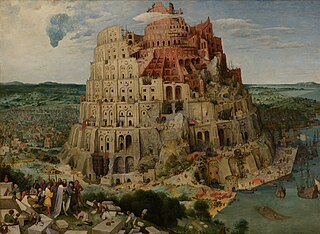 W
WThe Tower of Babel narrative in Genesis 11:1–9 is an origin myth meant to explain why the world's peoples speak different languages.
 W
WBabylon the Great, commonly known as the Whore of Babylon, refers to both a symbolic female figure and place of evil mentioned in the Book of Revelation in the Bible. Her full title is stated in Revelation 17 as Mystery, Babylon the Great, the Mother of Prostitutes and Abominations of the Earth.
 W
WWife selling is the practice of a husband selling his wife and may include the sale of a female by a party outside a marriage. Wife selling has had numerous purposes throughout the practice's history; and the term "wife sale" is not defined in all sources relating to the topic.